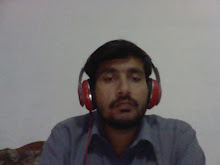Computer Networks CH# 05
Questions and Answers
i. Describe
any three difficulties a company may face in running a business without having
computer network.
Ans: A company may face a
number of difficulties in running a business without a
computer network.
Three of these are;
File Sharing:
A network makes it easy
for everyone to access the same file and prevents from creating different
versions of file.
Printer Sharing:
If you use a computer, you may also use a
printer. With a network several computers can share the same printer.
Communication
and Collaboration:
A network allows employees to share files,
view other people’s work, and exchange ideas more efficiently.
➤➤➤➤➤➤➤➤➤➤➤➤➤
ii.
What is meant by data transmission?
Ans: Data Transmission:
It is the process of sending data from one
device to another. It consists of sender, receiver and the medium which carries
the information. There are three modes of data transmission;
a. Simplex
b. Half-duplex
c. Full-duplex
➤➤➤➤➤➤➤➤➤➤➤➤
iii. Differentiate between Half-duplex and Full-duplex transmission modes.
Ans: Half-duplex Transmission Mode:
A
half-duplex mode can send and receive data/information in both directions but
not simultaneously. During data transmission, one end is the sender and the
other is the receiver.
Example:
It is used in ATM machines for
cash withdrawal, money transfer and paying bills.
Full-duplex Transmission Mode:
A
full-duplex mode is used to transmit data/information in both directions
simultaneously. A full duplex mode can transmit more data at higher rate.
Examples:
Communication between
computers in a network and communication over telephone lines.
➤➤➤➤➤➤➤➤➤➤➤➤
iv.
Define network architecture.
Ans: Network Architecture:
Network architecture refers to layout of network that consists of
computers, communication devices, software, wired or wireless transmission of
data and connectivity between components.
A computer network can be as small as two computers linked together by a
single cable whereas large networks connect thousands of computers and other
devices.
Types of
Network Architecture:
i.
Client/Server
network
ii.
Peer-to-peer
network
iii.
Point-to-point
network
➤➤➤➤➤➤➤➤➤➤➤➤
v. Differentiate between a server and a client
computer.
Ans: Server Computer:
A server is the main computer in a
network which is used to manage network
resources and facilitates other computers.
Client Computer:
Clients are computers in a network that
access services made available by a server.
In a client /server network, each
computer on the network acts as either server or client. Servers are not used
as client computers and client computers are not used as servers. In this
environment server shares its resources such as hard disk, printer and internet
connection with client computers
➤➤➤➤➤➤➤➤➤➤➤➤
vi. Compare LAN and WAN.
Ans: Local Area Network:
LAN is commonly used network. It is a network
that covers a limited area, usually ranging from a small office to a campus of
nearby buildings.
Examples:
LAN include
networks within a school, college,
business and organization.
Characteristics of LAN:
i)
LAN is restricted to a limited geographical area.
ii)
Data Transmission speed is fast.
iii)
Data communication problems rarely occur.
iv)
Transmission
Medium is owned by the user organization.
Wide
Area Network:
WAN spans a large area, connecting several
locations of an organization across cities, countries and continents. A WAN is
often made up of two or more LANs or MANs.
Examples:
WAN are the
networks used in banks, airlines and national database authorities like NADRA
in Pakistan. Internet is another good example of WAN.
Characteristics of WAN:
i)
WAN spans large geographical area. It can connect
computers b/w cities & countries.
ii)
Data Transmission speed is slow.
iii)
Data communication problems often occur.
iv)
Transmission
Medium is leased line or public systems like telephone lines or satellite
links.
➤➤➤➤➤➤➤➤➤➤➤➤
vii. Why star topology is more reliable than bus or ring topologies?
Ans: Due to the following reasons star
topology is more reliable than bus or ring
topologies;
a) Provides fast communication between
computers.
b) Easy to connect new devices to the network.
c) Easy to detect and fix faults.
d) Failure of one computer does not stop
functioning of the entire network.
➤➤➤➤➤➤➤➤➤➤➤➤
viii. Mention any three problems which may occur if peer-to-peer network is used for a large number of users in an organization.
Ans: Problems of
peer-to-peer Networks:
1.
In a peer-to-peer network, each computer can play the
role of server, client or both at the same time.
2.
These networks are suitable for a small number of
users, ranging between two to ten computers. Large networks become difficult to
manage.
3.
It does not provide centralized security. No single
person is assigned to administer the resources of network. Individual users
have complete control over resources of their computers.
➤➤➤➤➤➤➤➤➤➤➤➤
ix. What is ISDN ?
Ans: ISDN:
ISDN stands for
integrated services digital network. It provides a maximum speed of 128kbps
which is more than Dial-up connection but less than DSL. It can transmit both
voice and data at the same time over a single cable. It requires that the user
has ISDN digital telephone service from telephone company and uses a faster
modem than dial-up modem. ISDN service is being replaced by faster DSL service.
➤➤➤➤➤➤➤➤➤➤➤➤
x. What is CDMA technology?
Ans: CDMA Technology:
CDMA stands for code
division multiple access. It is a wireless cellular communication technology.
CDMA services include short messaging, voice, data and video transmission. It can
provide speed of several Mbps for video transmission.
➤➤➤➤➤➤➤➤➤➤➤➤
Fbise Notes-Computer | Computer Networks Short Questions
 Reviewed by fbisenotes
on
July 16, 2019
Rating:
Reviewed by fbisenotes
on
July 16, 2019
Rating:
 Reviewed by fbisenotes
on
July 16, 2019
Rating:
Reviewed by fbisenotes
on
July 16, 2019
Rating:



















No comments: